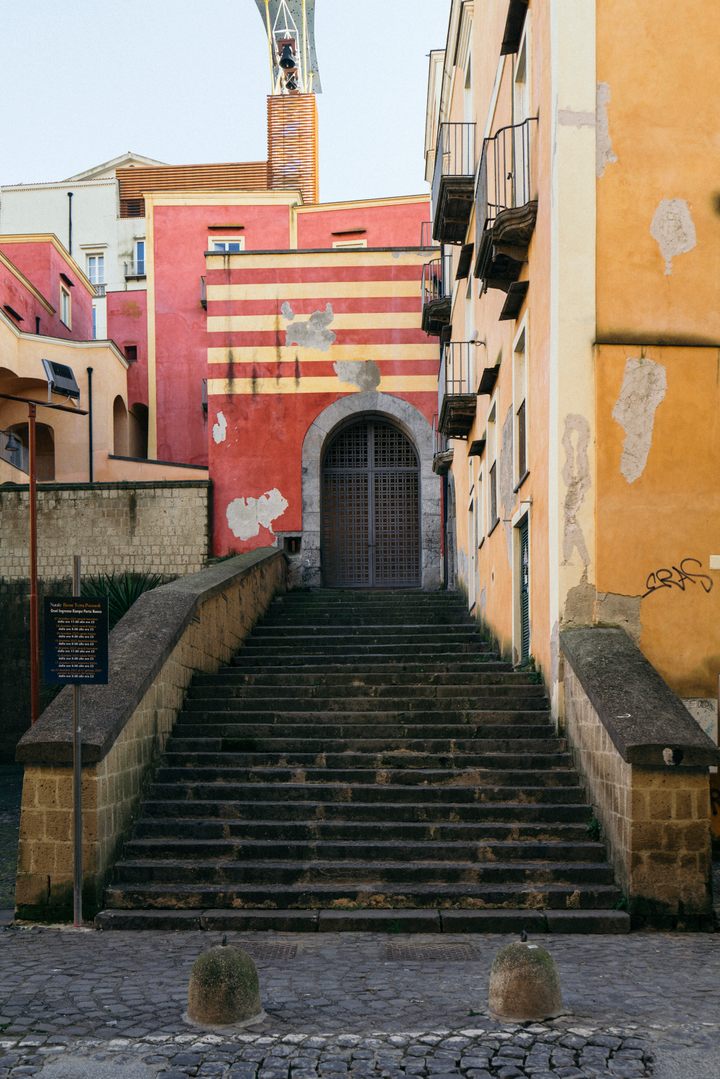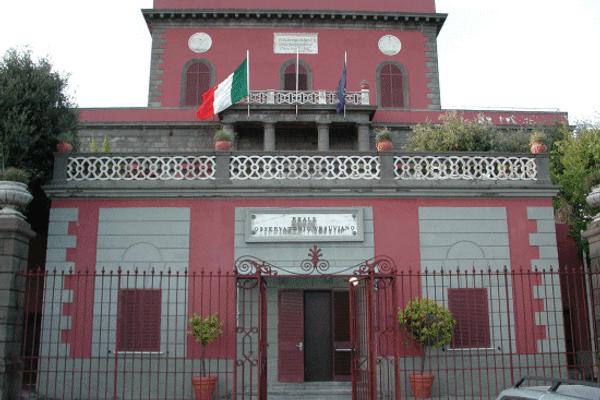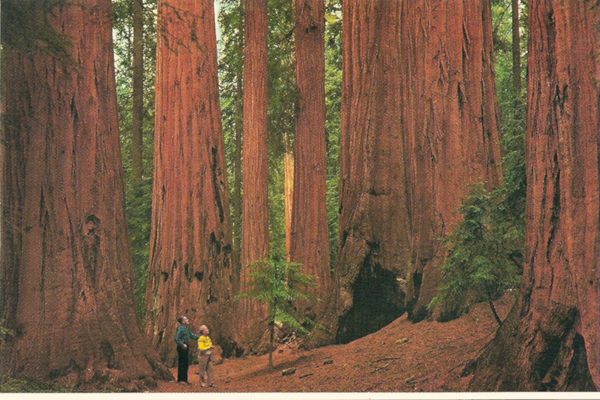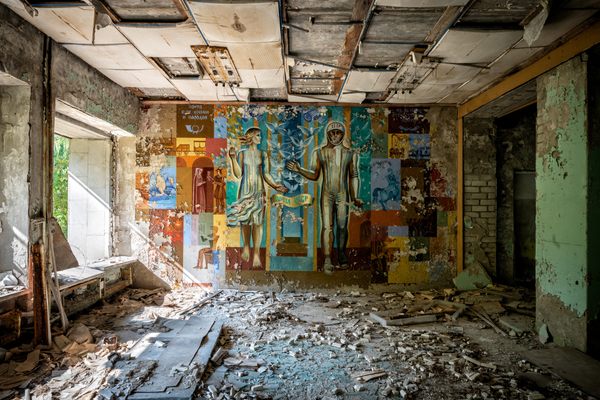
A False Volcano Emergency Created This Stunning Abandoned Village
Welcome to the ghost town of a modern Vesuvius that never happened.
The oldest inhabited part of Pozzuoli, a town just west of Naples, looks like a typical picturesque Italian village ready to be taken by storm by hordes of tourists. Named Rione Terra, or “Earth quarter,” it’s perched on a tuff promontory overlooking the Tyrrhenian Sea. Pastel-colored buildings dating back to the 1600s flank the narrow, stone-paved alleys, with their sunglow yellow and English red coming alight under the Mediterranean sun. The cathedral has been recently renovated to display the remains of the Roman temple of Augustus that stood in its place centuries ago. The buildings’ balconies offer views stretching far out over the blue sea, the Gulf of Pozzuoli, and the Phlegrean Islands in the distance.
But except for lone renovation workers or the occasional bewildered muttering words like, “Is it open?” or “What a shame,” Rione Terra is largely lifeless. It has been freshly renovated, and yet not a soul has lived here in decades. The windows of the inviting façades are coated with dust, and the rooms inside are unlit and barren. Seagulls are often the only users left for the deckchairs lined on terraces that were once teeming with people.

The abandonment of Rione Terra dates back decades ago, when a surprising sequence of events scarred Pozzuoli and its population. Many residents still haven’t gotten over the incidents, claiming the mass eviction shouldn’t have happened and describing the details in conspiratorial terms. “Today, we still wonder what the real reasons were,” says Antonio Isabettini, a painter who grew up just outside the neighborhood.
Rione Terra and Pozzuoli sit atop Phlegraean Fields, a complex of two dozen craters often referred to as Europe’s most dangerous active volcanic area. Pozzuoli doesn’t look like a town overlooking a volcano—it’s right by the sea and surrounded by verdant hills—because Phlegrean Fields is a caldera, a depression born when a volcano’s magma chambers empty and the roof collapses. Nine miles across, partly underwater, and home to half a million people, Phlegrean Fields has been active for 80,000 years. One of its violent eruptions 39,000 years ago is believed to have sent ash as far away as Russia, caused a volcanic winter in the surroundings, and abruptly cooled the climate across the world.

The caldera is home to a peculiar geological phenomenon known as bradyseism. The ascent of magmatic fluids causes the ground in Pozzuoli to bulge and deflate over years, as if something simmers underneath. The hot fluids seep underground, making subterranean rocks swell and fracture. On the worst days, the process can generate hundreds of low-intensity earthquakes, which are preceded by “a rumble coming from the bowels of the earth,” as Giuseppe Ioffredo, a naturalist guide and freelance journalist born in Rione Terra, puts it. “It’s like something is coming at you.”
Ioffredo says people living on Phlegrean Fields approach the volcano with a certain duality. In all ages, residents always tried to make the magma work for them: Romans built thermal baths, and current residents harness its geothermal energy to cook their meals or heat buildings. But periodically, the volcano snaps back, reminding them it can’t be controlled—and Pozzuoli has a history of flourishment and abandonment, which some link to volcanic activity. This is somewhat reflected in Ioffredo’s own life: Phlegrean Fields employed him for 30 years—he worked at one of the craters, Solfatara—but lost his job after three tourists lost their lives and the crater was closed to the public.

Rione Terra was one of the poorest parts of Pozzuoli when Ioffredo was born. About half of the homes were grottoes or basement flats. Families were numerous, and half of the residents slept in beds with up to four family members. The area was more densely populated than the world’s current most-densely-populated city, Manila—but with no skyscraper, the population was crammed into low-rise buildings and tiny alleys.
Phlegrean Fields erupted in 1538 and had been dormant for centuries—until 1970. Oral accounts of the events say fishermen noticed that the ground had risen because they struggled to reach their boats from the land, some pipes had broken, and there had been sporadic fish die-offs. But there was no scientific monitoring of the events, according to Giuseppe Luongo, who at the time was a volcanology researcher with the Vesuvian Observatory. That’s largely because there were no instruments nor tools in the area. “Phlegrean Fields was considered on its path to extinction,” he said. Weak seismicity followed, and, Luongo says, “The scientific community was taken by surprise.”


Luongo remembers scientists thought an eruption was imminent, and authorities decided to evacuate the most at-risk area: Rione Terra. On March 2, 1970, army trucks encircled the neighborhood; soldiers and police officers went door to door to drive residents away, sometimes against their wills and carrying few belongings. Then they walled up the entrances to Rione Terra, and authorities declared it uninhabitable. The municipality of Pozzuoli took ownership of all buildings.
Residents were taken to new shelters, but as the days went by, the eruption failed to materialize. Conspiracy theories slowly replaced panic among former residents. Some rumored they had been dispossessed to give way to building speculation. Others lamented that the bishop had been allowed to stay. Graffiti appeared on one of Rione Terra’s walls, accusing: “Our overlords want to demolish Rione Terra to enjoy this paradise.”

The ensuing events only fanned the flames. About a hundred families tore down the walled entrances and squatted part of the area. An earthquake in 1980 caused everyone, including the bishop, to leave. Then, between 1983 and 1984, during what scientists refer to as an “aborted eruption,” in which magma ascended close to the surface but lacked the power to break through the crust, Phlegrean Fields gave some the strongest seismic activity of recent memory. A 4.0-magnitude earthquake damaged some of Pozzuoli’s oldest buildings, and on one night, the town was struck by at least 500 earthquakes.
Some 40,000 people fled during the crisis, and authorities set out to lower the population density of coastal Pozzuoli. Thousands were relocated to a newly built neighborhood in the surrounding hills. But over time, density containment plans were watered down, and others were allowed to settle back in coastal Pozzuoli—but not Rione Terra. Luongo, who had become the director of the Vesuvian Observatory by then, says this was “a mistake.” The area remained uninhabited due to seismic and volcanic risks, while the adjacent settlements once again became densely populated.
Rione Terra fell into disrepair and remained inaccessible for decades as authorities pondered what Rione Terra would become, what to keep and raze. Antonio Isabettini is a painter who grew up just outside Rione Terra and started painting it daily to preserve its memory after 1970. “Nature, the weather, thieves, and vandals began to rule,” he says. “Walls crumbled, the grass grew on the streets, and thieves took away what they could. Going there became dangerous because of stray dogs and unsafe terraces hanging over the cliffs.”


Successive local authorities renovated Rione Terra, partially reopened it, and decided to make it a tourist attraction, turning fishermen’s homes into 88 hotel rooms, a restaurant, two bars, and 14 shops—even if the reopening took decades because of several bureaucratic delays. Then, as renovation works inched forward, another sequence of events delayed reopening further, making Rione Terra the unusual kind of ghost town it currently is: a renovated one. First came Covid-19, then the arrest of a mayor on corruption charges for his management of Rione Terra’s renovation. Then Phlegrean Fields reawakened again in fall of 2023. Pozzuoli was struck by the most intense seismic activities and fastest uplifting in four decades, with some 2,000 tremors shaking the area in September and October alone.
Pozzuoli’s current mayor, Luigi Manzoni, is making another push to reactivate the neighborhood, open the hotel, restaurant, and bars, and bring people there. Manzoni sees the recent crisis as an opportunity, not a threat. “I want to set bradyseism in a positive light,” he says. “It’s a distinctive trait of this area: It could attract tourists. The recent crisis has made Pozzuoli famous internationally.” Manzoni says his administration temporarily allowed pop-up bars and events in Rione Terra during summer and over Christmas, and it had been a success. One could ask if this perhaps is just the latest attempt to harness the power of the volcano, despite nature’s unpredictability.
It seems Rione Terra is destined to become a tourist spot without any residents. Residents will not be allowed to move back into Rione Terra. Manzoni said authorities want to keep the population density to a minimum in case of earthquakes or eruptions. (The idea is that tourists are easier to evacuate than stable residents.) Pozzuoli residents say that even if someone were allowed to move back in, deciding who would get that right would cause “a revolution.” Most of the old residents have died, and property prices have skyrocketed, making it easier for authorities to keep the area a no man’s land.
The renovation of part of the area is not over yet, and Manzoni says it could reopen to the first visitors in about a year. Unless, that is, Europe’s most dangerous active volcano gets in the way.



























Follow us on Twitter to get the latest on the world's hidden wonders.
Like us on Facebook to get the latest on the world's hidden wonders.
Follow us on Twitter Like us on Facebook